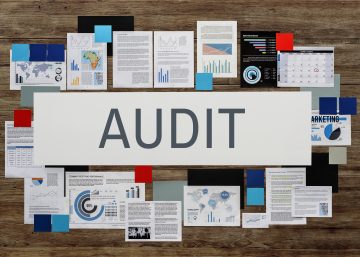Software: Interview with CA Jignesh Kansara
ERPCA recently spoke with CA Jignesh Kansara, a partner with a well-known CA firm DAKSM on a range of topics. Besides his views on the ERPCA practice management software, CA Jignesh also shared his views on the impact of latest technology trends on digital transformation of the CA profession as well as some do’s and don’ts on making optimum use of an office management software. Read on for edited excerpts from our conversation.
Tell us a bit about yourself and your current practice.
Basically, I’m a partner in a firm called DAKSM & Co. LLP Chartered Accountants with a presence in Mumbai, Delhi and Noida. DAKSM is derived from sanskrit and means somebody who is capable; it denotes ability. I’m into indirect tax,so I take care of GST and service tax. Also, I’m mainly into litigation advisory and consultancy. I have another team which takes care of compliance- GST compliance, but personally, I am focused mainly on litigation, advisory and consultancy part. My other partners are into income tax. One of my partners is into forensic audit and one more partner is into internal audit. That’s about our firm. So we are specialized partners and each partner is devoted to a specialized field. Including the four partners, we are about 40-people strong.
How did you get started with ERPCA?
Basically, I have used three software products prior to using ERPCA. The main issue with the other software products was that after they were designed and developed, there was no maintenance and updates. Once the software has been designed, they feel that it will work for life, but in real life that doesn’t happen. Somebody told me about ERPCA and suggested that we try out this good software. Since Sujeet and I are both from Mumbai, we decided to meet up and have a conversation. After that, I thought of giving it a try and we got started.It has already been a few years since we got started!. The software is really good and Sujeet has made a lot of changes to this software over a period. Our journey together continues even today. What I like about Sujeet is that he keeps on updating the product. He is adaptive, he listens to users and whatever changes we suggest, he considers them sooner or later.
What are the problems that ERPCA helped solve for you?
In our work, there is a chance of things falling through cracks. Now I am into ‘litigation’ practice where every two days, there is a hearing. Suppose I have two hearings next week, I need to prepare for those hearings this week itself. I cannot wake up at the last moment and ask for the client to provide relevant details. Many times, it happens that you know there may be a conflict in schedule on a particular day with hearings in different parts of Mumbai. So I need to prepare well in advance and see the deadlines. Unless we have some dashboard like ERPCA, it becomes very difficult to do so. I get visibility into my deadlines for the future, say next week.
Another case: a staff member may be on leave for 3-4 days. Once he resumes, he will ask what is to be done. He may have been working on a project that is still pending and ideally that should be completed first. With a good dashboard that helps us keep track of who is doing what, we are able to keep control over tasks and ensure continuity where possible and necessary. So, in a nutshell, ERPCA is really useful for us in
a) Task management and monitoring and
b) Planning and preparation.
ERPCA currently has a whole bunch of features such as attendance management, timesheet management. Which of these have been the most useful for you?
Basically, we don’t give much importance to attendance because ours is a small film, so we know who is in and most of my staff operate in the same premises. All of our partners are aware of our people, and we know for sure who is absent and who is present, so we don’t give much importance to the attendance part. But the time sheet management part is of course one of the key features — without that a practice management software cannot operate.
So on your dashboard, your scheduler and automatic work creation features make our life easy.
Another thing is that we get to know the time taken for certain tasks is higher than what was expected for such a task. This enables us to review and analyse further and address the cause of such variances and take appropriate action. The data we get from the reports on time taken by specific resources on certain types of tasks helps us in resource planning and task allocation. For example, we are able to forecast that since Mr.X is likely to complete Task A within a day, we need to allocate and schedule the next set of tasks for that person. The software has been beneficial for us in our resource management.
What have been the key differentiators of ERPCA in your view?
Sujeet personally speaks to users on a regular basis and this personal touch is important in any business, particularly so in the service industry. That is one of the main reasons we use ERPCA. Secondly, the ERPCA software is updated regularly. As our business environment keeps changing, we also want to have the software to change accordingly. That doesn’t happen with many softwares. A program designed ten years ago might have been very, very good at that point in time. But today it might have lost its relevance.
“I have seen software which was really good, but was complicated. Unless my users use this software, it is useless for my business. So, it has to be simple and be acceptable to the users. ERPCA has been useful and very easy to use, keeping our users happy, which is why we have continued with it.
How did you manage to get staff in your organization to adapt and start using it and accept ERPCA as we know that there is always resistance to change in any organization?
The thing is unless we punch in quality data no software can give us results. If my staff comes to me each morning asking what is to be done today, it is not a good use of my time. They should know in advance what it is they need to work on. So, unless we use some system, we cannot design our day.
Of course, this issue of resistance is there. But it is up to the management how we overcome that and make appropriate choices. For example, we don’t use the software to track attendance as we know the people coming into the office regularly. However, with respect to forecasting for tasks, we ensure task management is followed. We are practical and not adamant, and want to ensure that there is a system in place to take care of our resources and money. It is a bit of give and take – in certain aspects, we agree to be flexible in favour of our staff and in some areas we insist on how certain things must be done and enforce that.
How can a service business continue to maintain a personal touch with all clients as it grows?
Yes, as a business grows, it is true that we cannot speak to all clients regularly. However, we should be reachable. As long as we are reachable and there are systems in place and clients know that someone is taking care of them, they will understand. It is critical that crucial client issues are addressed in a timely fashion.
Communication with clients can be managed and connections can still be maintained. There are so many communication tools, including WhatsApp.
Is there a metric or measure for how ERPCA has benefited your practice?
The daily report is a good tool. If I spend 10 minutes in the day to analyze it, it gives me a great perspective of what is happening and what some of the challenges our people are facing and their skills.
For example, if a work was done last year in a certain number of hours and if it has taken double the hours this year, then there is something wrong. Either we have failed to give the person proper training, or there may have been an issue with clients who may not have given relevant details properly, or could be something else. The features in a system like ERPCA helps unearth issues like these and enables the management to take necessary actions. We used Excel previously but that did not give all these capabilities. By identifying issues, for example, say at the client end, we can communicate with the client and also get them to take required actions. Before issues snowball, we can take corrective actions.
How do you see the latest trends in digital transformation such as use of AI impact the practice in CA firms?
See, AI and all these things will be there. We have stopped doing many things that we used to do previously and are now using ChatGPT extensively. ChatGPT can draft stuff much better than any of our staff including me, so why not use that to advance our practice? AI will help us and not destroy us; of course, we have to be on our guard and be responsive to technological challenges. I believe we need to live with technology and use it well. In fact, by using it properly, one can go beyond those who don’t want to use technology.
A lot of the mundane work that our profession has been doing will disappear because of technology. That is good and it will only make the profession stronger.
From your experience, what are the do’s and don’ts that you would suggest for optimum results from using a practice management software?
Let us say if you want to track tasks, it is imperative that I should create that task first. Often what happens is that the tasks are not created. So, time is spent on tasks that are not in the system and that can go unbilled. It is a criminal waste of time. We can lose considerable earnings because service is delivered to the client and we have incurred the cost, but have either missed invoicing the client for those or are not able.
If staff is putting more than 25% on some ad-hoc matters, it could mean that the staff is firefighting, which on a long-term basis will not add any value – neither to the skills of the staff or to the revenue of the firm.
Another thing is that it is important that everybody in the organization work on something that we know is important for the organization. If you don’t do it, nobody else will.
While creation of a task is important, we need to track it on a regular basis too, say at least once a week. If you track it on a monthly basis, it may not give proper results as prior intervention may be necessary. If you track the task, say between 3-7 days, depending on the task, you tend to get lots of useful insights on the client, the team member, about changes happening in the teams, etc. So, do spend some time in a week analysing what is going wrong and what is going well.
Any suggestions for what ERPCA should be doing better so that it becomes the product of choice for more clients?
Previously ERPCA was not into invoicing. It will be great if you can address the entire lifecycle from quote to collection.. The quotation part is currently missing in ERPCA.
Interested in improving your customer satisfaction, increasing client retention, preventing revenue leakage, maximizing efficiency and effectiveness? Register for a demo of ERPCA, India’s first multi-lingual, mobile-app based practice management software for CA firms, tax consultants, financial services advisory firms and more. Better still, sign up for a 14-day free trial of ERPCA and see for yourself the wonderful features and benefits of this software.










